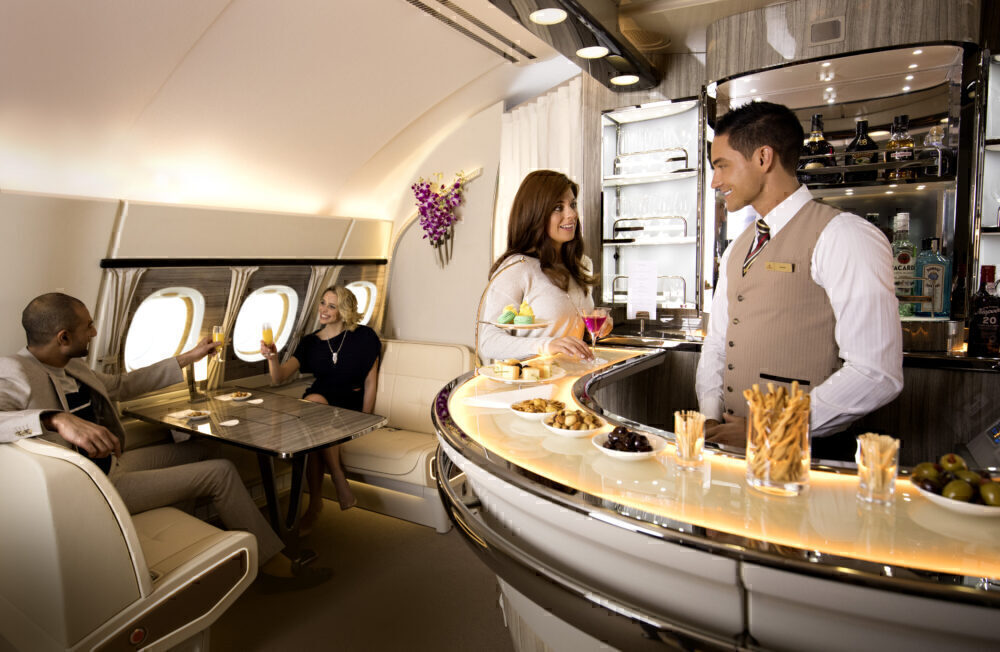There is an ongoing environmental and emissions reduction focus in many industries – and aviation is certainly no exception. We have seen this feature in new aircraft designs for many years. Airbus however has more extensive plans in place to launch zero-emission hydrogen-powered aircraft. What does this mean for passengers, though, and when could we see changes?

Three proposed aircraft
Airbus launched its zero-emission project in 2020, with three proposed aircraft designs. These are all hydrogen-powered aircraft with different designs. Together they are known as ZEROe concept aircraft:
Two of these are based on traditional aircraft airframes. There is a smaller turboprop aircraft with a capacity of 100 passengers and a range of 1,000 nautical miles. A larger turbofan narrowbody will offer a capacity of 120-200 and a range of up to 2,000 nautical miles. The third proposal is a new blended wing design that would shake up current aircraft design and allow more options for hydrogen storage and distribution.
The overall project looks not just at aircraft, though. It considers the wider economic and infrastructure aspects. Getting hydrogen propulsion to work is not itself the main challenge (this has technically been possible for many years). But rather the overall adoption, fuel cost, and the required airport infrastructure.




Hydrogen-powered
The three proposed aircraft will all use liquid hydrogen as fuel. These are not electric aircraft, nor are they extension to biofuel use (which will work with existing engines).
Hydrogen can be used in two ways, and Airbus is considering both for these aircraft.:
- It can be used as a fuel source for fuel cells. Hydrogen reacts with oxygen to produce electricity (with heat and water as the by-products). This then powers the engine.
- Alternatively, hydrogen can be used directly as a fuel source in a modified engine.
Airbus will select the population method to be taken forward in 2022. It is likely that it will use a hybrid approach, where hydrogen is used both directly as a fuel, and via an electric fuel cell.




First aircraft flying in 2035
The aim is to have the first ZEROe aircraft in service by 2035. Airbus currently plans to decide in 2024 or 2025 which of the proposed aircraft this will be. But it has said it is unlikely at this stage to include the third, blended wing design. It will instead be based on either the turboprop or turbofan jet options.




These first aircraft are likely to have only minor differences for passengers – apart from the knowledge that you are onboard a hydrogen-powered zero-emission aircraft, of course.
The fuselage shape will be slightly altered to accommodate additional storage for liquid hydrogen. This will likely mean a larger rear section of the fuselage (behind a bulkhead) dedicated to this.
Whatever aircraft is developed, we probably won’t be flying extensively on it to start with. The range will be relatively low to start with. And infrastructure will be a major limitation. Adapting airports worldwide to offer hydrogen fueling will be complex and expensive – especially before the use of hydrogen-powered aircraft is common. Airbus is looking at this as part of its plans and aims to facilitate high flight numbers even with few airports initially.
Waiting for bigger changes
The bigger changes will come when aircraft such as Airbus’ third proposal is developed. These would be optimized for the use of hydrogen and will start to unlock its real benefits. With more space to store hydrogen, longer-range operations will be possible and costs will lower further.




For passengers, this is where big differences would be noticed. The cabin of course would be much wider, offering an experience not seen before on commercial aircraft. This space could, of course, be used by airlines to develop innovative cabin approaches. Just as the extra space on the 747, and later the A380, encouraged airlines to assess features such as lounges, bars, and showers.




Even without luxury additions though, flying on an aircraft like this would feel very different. Would we see seating configurations like 3-5-5-3? Or would seating approaches be radically changed – perhaps offering separated cabins?
Although we have never seen such cabin layouts, the idea is not completely new. Lockheed Martin had a plan in the 1990s for a high-capacity aircraft. This featured four aisles, with a seating configuration 3-4-3-4-3. And going back much further to pre-Second World War days of flying boats, separate seated small cabins were the norm. The Boeing 314 (which served as Pan Am’s famous Clippers) sat up to 70 passengers in seven separate compartments – with an extra dining room.
The introduction of Airbus’ ZEROe aircraft is likely to be a major advance in the emissions reduction movement. Passengers may not notice that much initially, but there are plenty of wider benefits. Feel free to discuss this further in the comments.



